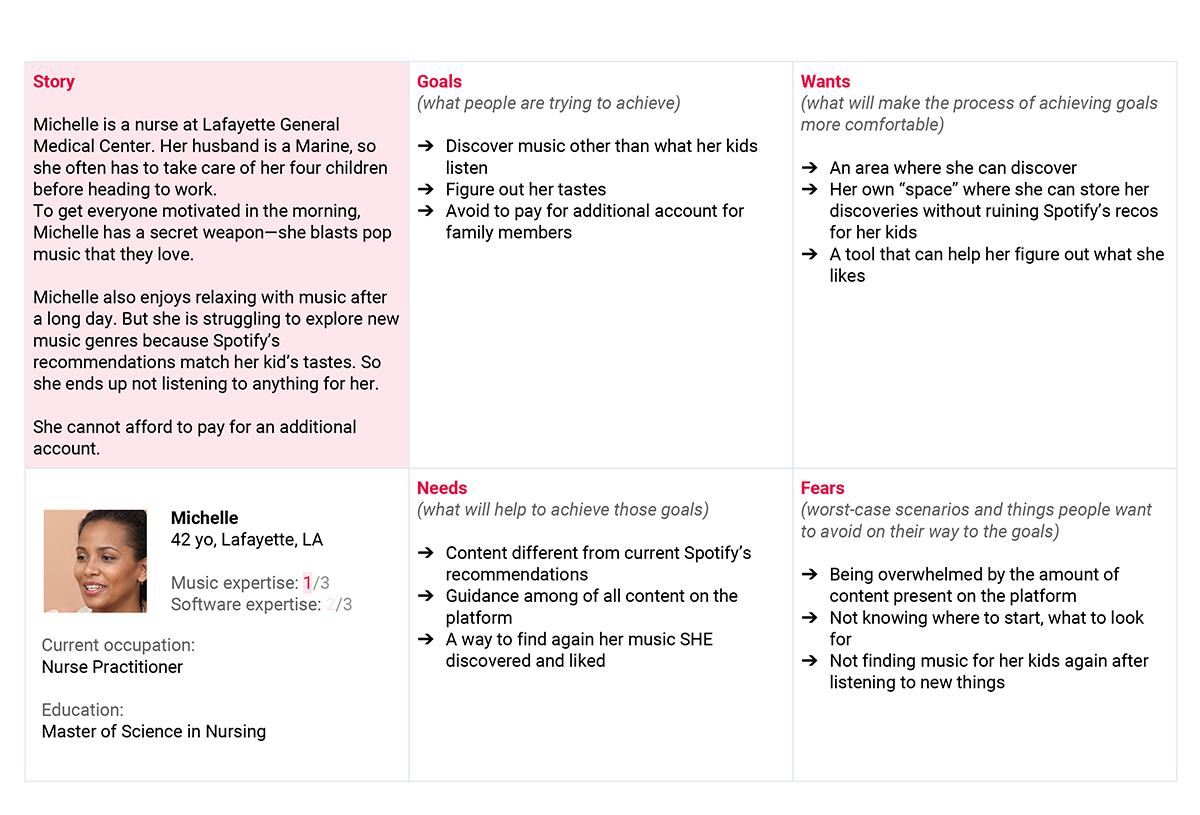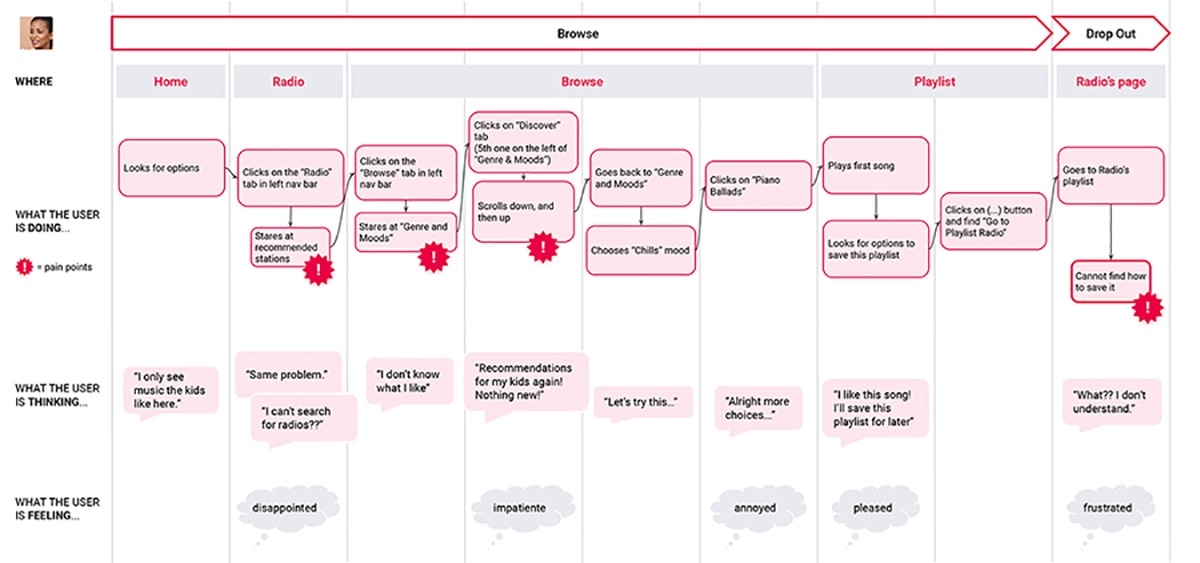Spotify Study Case
- Project date: February, 2021
- Learning project: Holberton School
- Country: Colombia
After reviewing the business’ goals at the end of last quarter, the Research team wants to identify if we have an opportunity to make users’ stream more content. They have identified a challenge which they think is worth exploring: “Improve how Spotify users find music to listen to.”
Learning objectives:
- solving a UX problem
- writing a UX case study that explains your discoveries
Process details
Overview:
Spotify was founded in 2006 in Stockholm, Sweden, by Daniel Ek, former CTO of Stardoll, and Martin Lorentzon, co-founder of Tradedoubler. According to Ek, the company's title was initially misheard from a name shouted by Lorentzon. Later they thought out an etymology of a combination of "spot" and "identify." The Spotify app was launched on 7 October 2008.
What is?
Spotify is a digital music, podcast, and video streaming service that gives you access to millions of songs and other content from artists all over the world.
Basic functions such as playing music are totally free, but you can also choose to upgrade to Spotify Premium. Spotify is available across a range of devices, including computers, phones, tablets, speakers, TVs, and cars.
This exercise focuses on the Spotify desktop app experiences.
Fictional character:
Michelle, 42 years old, nurse practitioner, wants to discover new genre.
Problem Statement:
Michelle has a Spotify account that she shares with her entire family, mainly her children, which makes it frustrating for her to search for new musical genres of her personal taste because Spotify's recommendations match her kid's tastes.
"The goal is to provide to Michelle an option to find new music genres according to her tastes."
Scope & Constraints:
The scope is focused on searching for music.
Constraints: The user cannot afford to pay for an additional account.
After studying Michelle's experience in using the app looking for new genres of her preference, we can detect that she does not find the necessary tools for what she wants because the app only gives her recommendations based on the tastes of her children, both on the radio option as in explore option.
Because Michelle does not want to have additional accounts for her children and does not want to pay for other plans, a possible solution could be:
Create a plan where the user has the option of having different profiles in the same account.
A list of steps for this would be:
- Improve the app by including the profiles tab in the menu of this plan
- That the home page shows the option of profiles when entering the account so that the user can choose his own
- Profile tab in the left menu for quick profile creation and change
- That these profiles are independent and personalized for each musical taste
- Within each profile, have recommendations with personalized preferences in Radio and Discover
Conclusions:
- To improve the search experience, the app should allow the user to easily and quickly reach their musical preferences through search.
- For families with young children who want to use the app, the creation of profiles in a single parent account allows better control of the content that their children browse.
Sketches
Create profile page
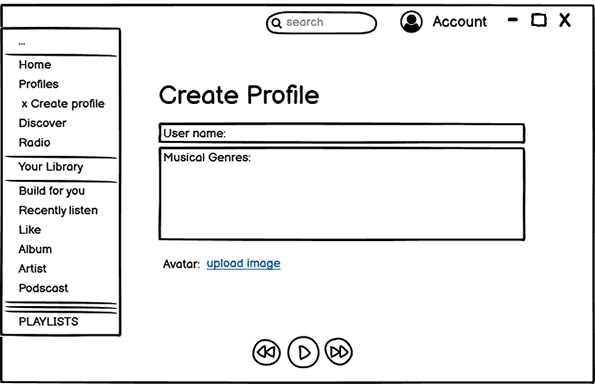
Profiles page
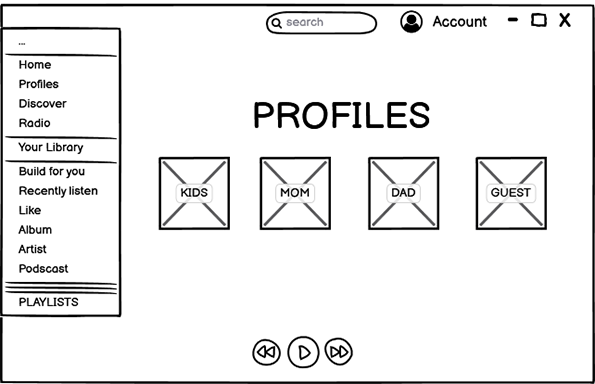
hi-fi prototypes
Create profile page
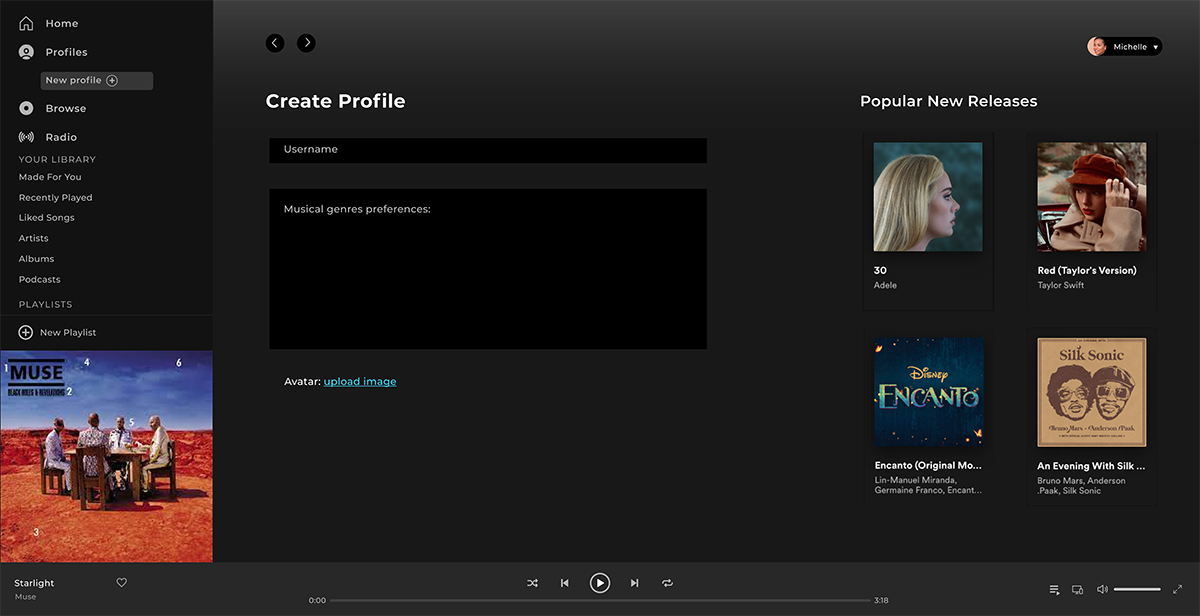
Profiles page
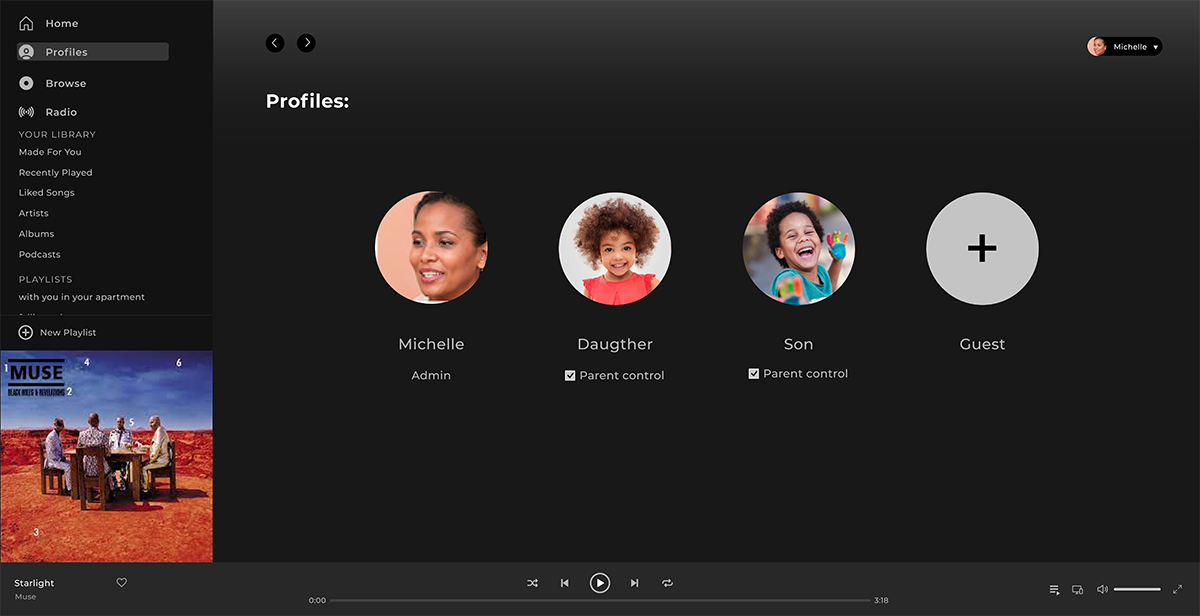
Tools & Technologies
Balsamiq, Photoshop, Illustrator, Figma

